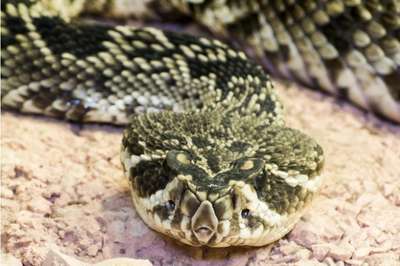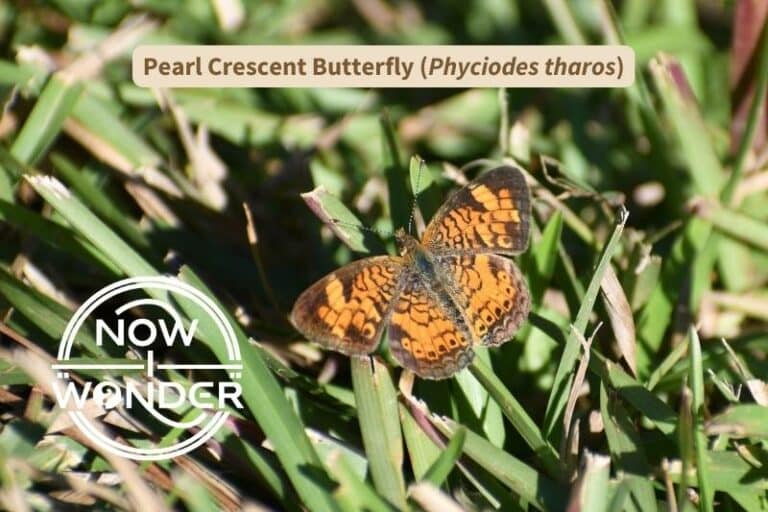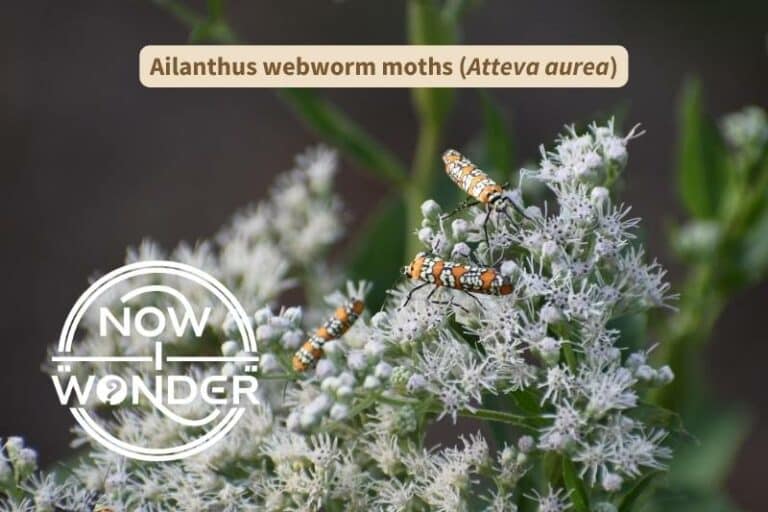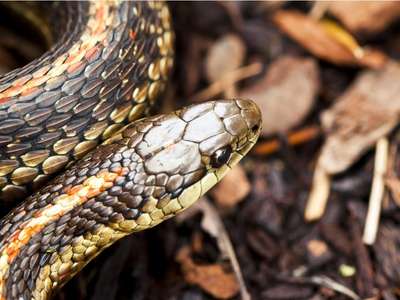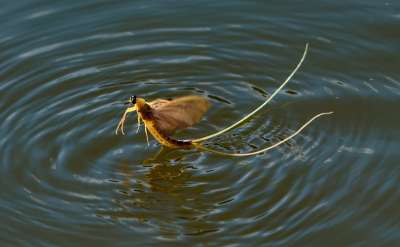Dragonflies are iconic insects. At first glance, they all look the same. They have bulky bodies, long, slender abdomens, and two pairs of wings. Their heads are large and nearly covered by huge, compound eyes.
It is easy to assume that dragonflies are all the same. But this is not the case. Dragonflies evolved over 320 million years into a large number of different species. Different species look and behave differently, even though they are all dragonflies.
Dragonflies are a diverse group of insects. They are grouped first into genera, then into seven families: darners, spiketails, clubtails, skimmers, emeralds, cruisers, and petaltails. Categorization is based on shared anatomical characteristics, like wing venation and terminal appendages.
Dragonflies and damselflies are beautiful, harmless to humans, and easy to observe. All are found near water. Read on to learn about the different types of dragonflies and damselflies found in the United States.
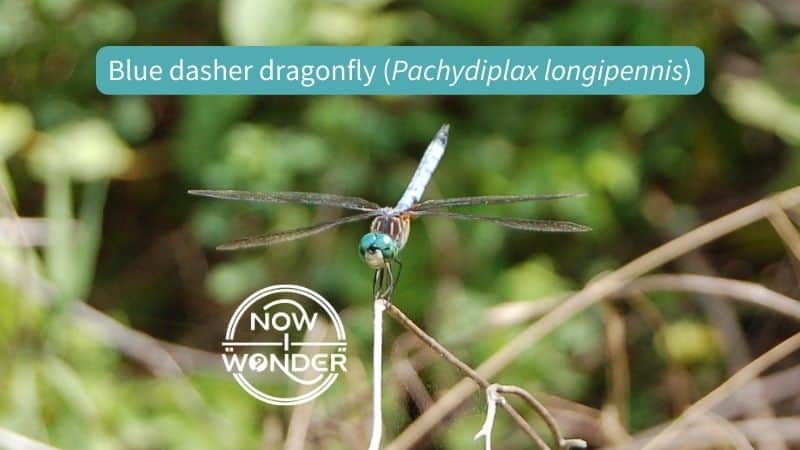
How many different types of dragonflies are there?
About 5500 species of dragonflies are known worldwide. Approximately 450 of these are found in North America. Forty species are commonly found in North Carolina; many more species are uncommon. Dragonfly species are grouped together into seven different families based on shared characteristics.
What are the different types of dragonflies?
- Darners (family Aeshnidae)
- Spiketails (family Cordulegastridae)
- Clubtails (family Gomphidae)
- Skimmers (family Libellulidae)
- Emeralds (family Corduliidae)
- Cruisers (family Macromiidae)
- Petaltails (family Petaluridae)
Darner Dragonflies (family Aeshnidae)
Darner dragonflies are medium to large dragonflies. In the southeastern United States, darners range in size between 2.4 – 3.7 inches in body length (6.1 – 9.4 cm).
Species in this family are strong fliers. They often fly far from water but are still associated with lakes and marshes. Darners spend most of their time flying or hovering. They course back and forth through an area and spot, catch and often eat prey in flight. When they do perch, they prefer to hang vertically from vegetation. If the temperature is cool, they may perch horizontally on flat surfaces to bask in the sun.
Besides being strong fliers, darner dragonflies are strong insects in general. They attack larger prey than some other dragonflies. Males sometimes injure females by gripping them too tightly when mating (Abbott 2015).
Worldwide, there are more “two-spined darners” species than any other type of darner. Two-spined darners are classified in genus Gynacantha. But only two of these are found in the United States (Abbott 2015).
In North America, the “mosaic darners” genus Aeshna has the most species. But the most common darner is the Common Green Darner (Anax junius).
Ways to identify Darner Dragonflies:
- Large insects, even compared to other dragonflies.
- Long, slender abdomens. Reminded early people of sewing needles used for darning socks – thus their common name.
- Wings are usually clear or tinted, without colored bands or patches.
- Only species of flier that has blue coloration on their bodies (Paulson 2011).
- Brightly colored, boldly patterned bodies with two thoracic side stripes and abdominal spots.
- Very large eyes that meet in the middle of the tops of their heads.
Darner Dragonfly genera found in the United States include:
- Mosaic Darners (Aeshna)
- Springtime Darners (Basiaeschna)
- Swamp Darners (Epiaeschna)
- Spotted Darners (Boyeria)
- Pilot Darners (Coryphaeschna)
- Pygmy Darners (Gomphaeschna)
- Two-spined Darners (Gynacantha)
- Cyrano Darners (Nasiaeschna)
- Neotropical Darners (Rhionaeschna)
- Three-spined Darners (Triacanthagyna)
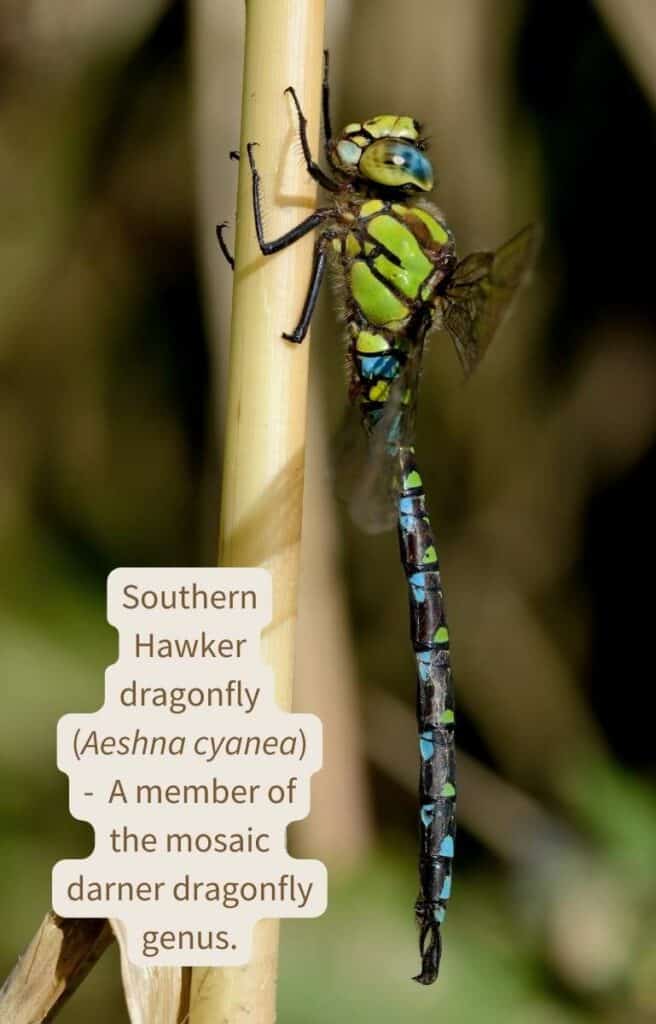
Petaltail Dragonflies (Family Petaluridae)
Petaltails are large dragonflies. The gray petaltail (Tacopteryx thoreyi) is the only petaltail found in the United States. It grows up to 3.3 in (8.4 cm) in body length.
Gray petaltails are seen in the United States from April to July. But are only common in the woods around marshes and seeps. They fly quickly and in straight lines from perch to perch.
Unlike darners, petaltails usually hunt by watching for prey while perched. Sometimes, they will fly around, searching for small, flying insects (Paulson 2011).
Gray petaltails perch vertically on flat surfaces. Their bodies are dull gray and black. They prefer to perch against tree trunks and rocks for camouflage. They sometimes land on people, especially if those wearing light-colored clothing.
Ways to identify Petaltail Dragonflies:
- Males have appendages on the tips of their abdomens that resemble the petals of flowers – thus their common name.
- Heavy, robust, gray and black bodies.
- Clear wings.
- Single black stripe on side of thorax.
- Widely spaced brown eyes that do not meet on the tops of their heads.
Petaltail Dragonfly genera in the United States include:
- Gray Petaltails (Tachopteryx)
Clubtail Dragonflies (Family Gomphidae)
In the southeastern United States, clubtail dragonflies range in size from 1.9-3.5 inches (4.8-8.9 cm).
The easiest way to identify a clubtail dragonfly is to look for an “abdominal club” at the end of the tail. The abdominal segments at the end of clubtails’ tails are larger than the rest of the abdomen. The shape looks like a juggler’s club.
Some cruiser and skimmer dragonflies also have clubbed abdomens, but not many. It is a rare trait outside of the clubtail family.
Both sexes of clubtail dragonflies have clubbed abdomens. Males tend to have bigger clubs than females.
Clubtails have short flight seasons. They appear and disappear from the landscape within a few weeks. But during that time, they can be quite common and easy to find.
Clubtails spend a lot of at rest. They like to perch horizontally on the ground, leaves, or on twigs. They watch for flying prey from their perches, then fly out to intercept.
Clubtails perform an interesting behavior called “obelisking”. Obelisking is when a dragonfly tilts its abdomen up so that it points towards the sky. Clubtails don’t obelisk all the time but they are more apt to do so than any other dragonfly.
Ways to identify Clubtail Dragonflies:
- Slender abdomens end in enlarged segments that resemble clubs – thus their common name.
- Dark abdomens decorated with complex patterns of rings, streaks, or spots.
- Clear wings.
- Patterned green or yellow and brown or black bodies.
- Pale thorax with multiple dark stripes.
- Small, widely separated blue or green eyes.
- “Obelisk” when perch in the open.
Clubtail genera found in the United States include:
- Greater Forcepstails (Aphylla)
- Pond Clubtails (Arigomphus)
- Spinylegs (Dromogomphus)
- Ringtails (Erpetogomphus)
- Common Clubtails (Gomphus)
- Dragonhunters (Hagenius)
- Lesser Forcepstails (Phyllocycla)
- Leaftails (Phyllogomphoides)
- Sanddragons (Progomphus)
- Hanging Clubtails (Stylurus)
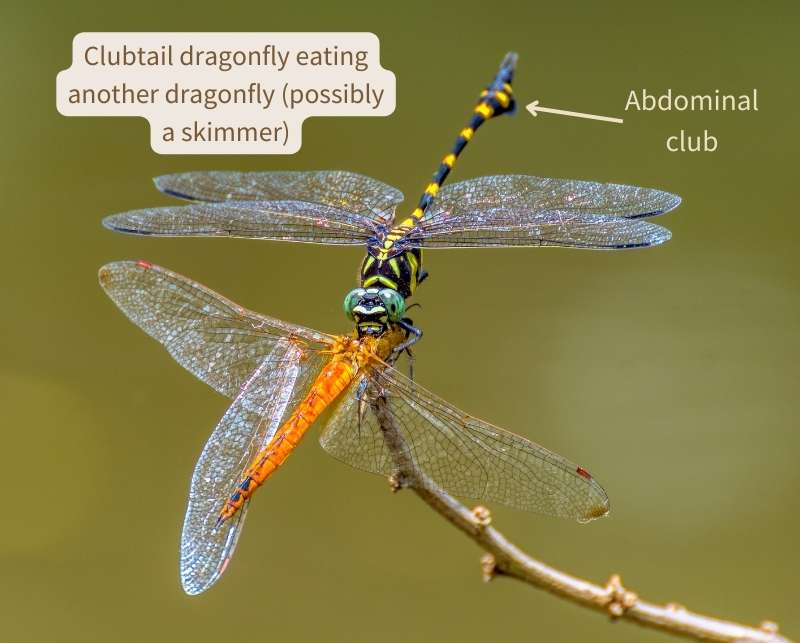
Spiketail Dragonflies (family Cordulegastridae)
In the southeastern United States, spiketail dragonflies range in size from 2.5-3.4 inches (6.4-8.7 cm) in body length.
Spiketail dragonflies perch vertically. They usually perch out in the open where they can get a good view of their surroundings. They fly low to the ground and seem to be fond of bees and wasps as prey (Paulson 2011).
Most spiketail species are found in Europe and Asia. Only about ten species are found in the United States. All of them belong to the same genus Cordulegaster.
Ways to identify Spiketail Dragonflies:
- Females have thin, spiky “ovipositors” on the ends of their abdomens. Ovipositors are the structures through which dragonflies lay eggs. Spiketails are named for the shape of these ovipositors.
- Clear wings.
- Black or brown bodies with yellow thoracic stripes and abdominal patterns.
- Blue or green eyes; either slightly separated or meeting on the tops of their heads in only one spot.
Spiketail Dragonfly genera seen in the United States include:
- Spiketails (Cordulegaster)
Cruiser Dragonflies (family Macromiidae)
In the southeastern United States, cruiser dragonflies range in size from 2.6 – 3.5 inches (6.6 – 8.9 cm) in body length.
Cruisers are often found in the same areas as darner dragonflies. This can make them hard to identify because both have large eyes that meet at the top of the heads. But some male cruiser species have clubbed abdomens, which darners lack. Also, cruisers are drab compared to darners and have only one stripe on their thoraxes.
Cruisers have long legs and like to perch vertically. They often perch at eye level to humans can be easy to spot. They fly up and down the lengths of streams and rivers and along lake shores, but may also travel far from water.
Ways to identify Cruiser Dragonflies:
- Spend most of their time in flight. They cruise long distances looking for prey and mates – thus their common name.
- Clear wings.
- Dark brown or black bodies with single, pale stripe on each side of the thorax. Stripe runs under the body.
- Abdomen is spotted or ringed.
- Large eyes that meet on the tops of their heads.
Cruiser Dragonfly genera seen in the United States include:
- Brown Cruisers (Didymops)
- River Cruisers (Macromia)
Emerald Dragonflies (family Corduliidae)
In the southeastern United States, emerald dragonflies range in size from 2.3 – 2.9 inches (5.8 – 7.4 cm) in body length.
Emerald dragonflies are medium-sized, slim, and found around fast flowing streams. They are active mostly in the early morning and late evening. They are harder to spot than dragonflies that fly throughout the day.
Emerald dragonflies perch at an angle. But they don’t land very often except at night to rest. Emeralds are “fliers” and spend their daylight hours hunting on the wing.
Ways to identify Emerald Dragonflies:
- Named for their brilliant green eyes (immature emeralds have reddish-brown eyes).
- Brown-blotched or clear wings.
- Dark-colored bodies covered with yellowish hairs. The hairs make them look fuzzy, especially when backlit.
- Bodies are sometimes metallic.
- Eyes meet along the top of their heads.
Emerald Dragonfly genera seen in the United States include:
- Baskettails (Epitheca)
- Sundragons (Helocudulia)
- Shadowdragons (Neurocordulia)
- Emeralds (Somatochlora)
- Boghaunters (Williamsonia)
- Common Emeralds (Cordulia)
- Little Emeralds (Dorocordulia)
- Striped Emeralds (Somatochlora)
Skimmer Dragonflies (family Libellulidae)
In the southeastern United States, skimmer dragonflies range in size from 0.8 – 2.5 inches (2 – 6.4 cm) in body length.
Skimmers are the largest family of dragonflies. There are over 1000 species worldwide, and 100 found in North America. They live around ponds and lakes. Most skimmers hunt from their perches. They watch the sky for flying insect, then fly out to attack.
Perching preferences vary by species within this family.
Some skimmers point their abdomens towards the sky when perched, like clubtail dragonflies. This behavior is called “obelisking”.
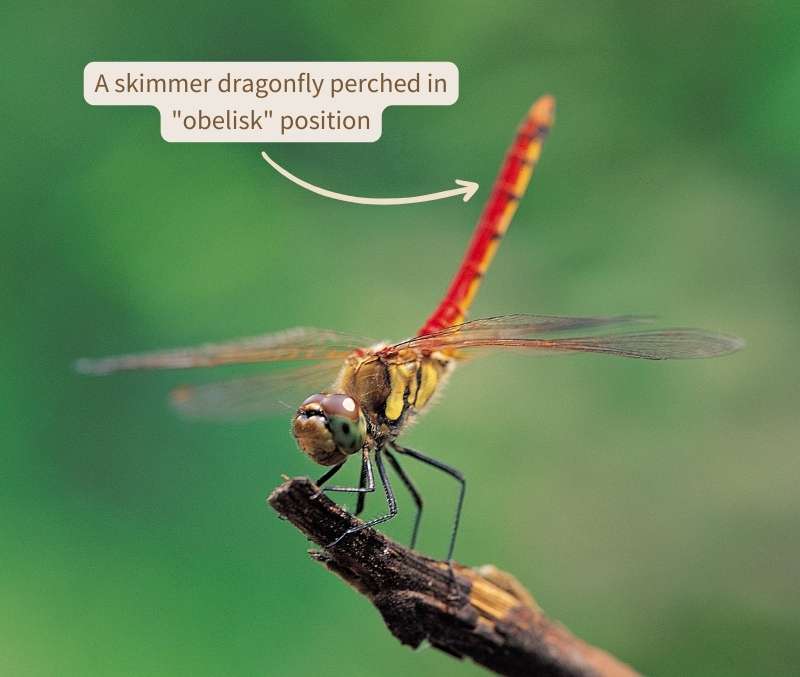
Other skimmers are “hang perchers” (Abbott 2015). These dragonflies dangle from branches or twigs.
Ways to identify Skimmer Dragonflies:
- Patterned wings with wide variety of species-specific colors and patterns.
- Boldly colored bodies.
- Abdomens are shorter and stouter than other dragonfly families.
- Mature males develop “pruinescence” (bluish or whitish coloration created within the exoskeleton).
- Large eyes that meet on the tops of their heads.
Skimmer Dragonfly genera seen in the United States include:
- Tropical Pennants (Brachymesia)
- Clubskimmers (Brechmorhoga) (have clubbed abdomens)
- Convict Skimmers (Cannaphila)
- Small Pennants (Celithemis)
- Set Wings (Dythemis)
- Pondhawks (Erythemis)
- Dragonlets (Erythrodiplax)
- Metallic Pennants (Idiataphe)
- Corporals (Ladona)
- King Skimmers (Libellula)
- Marl Pennants (Macrodiplax)
- Sylphs (Macrothemis)
- Hyacinth Gliders (Miathyria)
- Speckled Dashers (Micrathyria)
- Tropical King Skimmers (Orthemis)
- Blue Dasher (Pachydiplax)
- Rock Skimmers (Paltothemis)
- Rainpool Gliders (Pantala)
- Amberwings (Perithemis)
- Scarlet-tails (Planiplax)
- Whitetails (Plathemis)
- Filigree Skimmers (Pseudoleon)
- Meadowhawks (Sympetrum)
- Pasture Gliders (Tauriphila)
- Evening Skimmers (Tholymis)
- Saddlebags (Tramea)
Conclusion
Dragonflies are some of the most exciting insects to watch. They are more diverse than their basic body and wing design might indicate. Learning about the subtle differences between the families is a good way to fill dull, dragonfly-free winter days.
Related Now I Wonder posts:
For more about dragonflies and other insects in order Odonata, check out these other Now I Wonder posts:
- Is a dragonfly a fly?
- Can dragonflies walk?
- What do dragonflies do at night?
- What is the difference between a dragonfly and a damselfly?
- Dragonflies vs. Butterflies Part 1: First Comes Form
- Dragonflies vs. Butterflies Part 2: Second Comes Function
For information about insects in general, check out these other Now I Wonder posts:
- Do insects ever eat spiders? Part 1: Attacks from the air
- Do insects ever eat spiders? Part 2: Attacks from the ground
- Do insects have blood?
References
Abbott, John C.. 2015. Dragonflies of Texas : A Field Guide. New York: University of Texas Press.
Paulson, Dennis. 2011. Princeton University Field Guides: Dragonflies and Damselflies of the East. Princeton: Princeton University Press.


